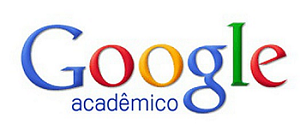Experience of Mothers After Prenatal Diagnosis of Cleft Lip and Palate
DOI:
https://doi.org/10.20435/pssa.v13i2.1094Keywords:
cleft palate, prenatal diagnosis, maternal behavior, health personnelAbstract
The study aimed to know the experience of mothers from the prenatal diagnosis of cleft lip and palate to the birth of their children. Based on a qualitative approach, we interviewed nine mothers of babies diagnosed with cleft lip and palate when undergoing ultrasound as part of routine examinations to monitor fetal development. We analyzed the data according to Content Analysis, which allowed the identification of four thematic axes: receiving the diagnosis, prenatal experience, experience in motherhood, and the importance of prenatal diagnosis. It was possible to identify the fundamental role of health professionals in the most impacting contingencies: time of diagnosis, prenatal consultations, search for a specialized center, and maternity. Mothers revealed that intrauterine diagnosis was important and that professionals' behaviors are crucial in this trajectory to ensure access to the benefits of early discovery.
References
Altmann, E. B. de C. (1997). Fissuras labiopalatinas. Carapicuiba: Pró Fono.
Bardin, L. (2011). Análise de conteúdo. São Paulo: Edições 70 Ltda.
Berberian, A. P. B., Tonocchi, R., Souza, D., Moleta, F., Correia-Lagos, H. N., & Zanata, I. L. (2012). Fissuras orofaciais: aspectos relacionados ao diagnóstico. Distúrbios da Comunicação, 24(1), 11-20.
Bomfim, O. L., Coser, O., Elisabeth, M., & Moreira, L. (2014). Unexpected diagnosis of fetal malformations: therapeutic itineraries. Physis Revista de Saúde Coletiva, Rio de Janeiro, 24(2), 607-662. doi:https://doi.org/https://dx.doi.org/10.1590/S0103-73312014000200015 DOI: https://doi.org/10.1590/S0103-73312014000200015
Brasil. Ministério da Saúde. (2006). Pré-Natal e Puerpério: Atenção qualificada e humanizada – Manual técnico. Secretaria das Ações em Saúde, Departamento de Ações Programáticas Estratégicas. Brasília-DF: Ministério da Saúde.
Carlsson, T., Starke, V., & Mattsson, E. (2017). The emotional process from diagnosis to birth following a prenatal diagnosis of fetal anomaly: A qualitative study of messages in online discussion boards. Midwifery, 48, 53-59. doi:https://doi.org/10.1016/j.midw.2017.02.010 DOI: https://doi.org/10.1016/j.midw.2017.02.010
Davey, M. P., & Fisher, K. (2016). Fathers of Children Born With Cleft Lip and Palate: Impact of the Timing of Diagnosis. Families, Systems, & Health, 34(2), 150-158. doi:https://doi.org/http://dx.doi.org/10.1037/fsh0000198 DOI: https://doi.org/10.1037/fsh0000198
Di Ninno, C., Gomes, R., Santos, P., Bueno, M., Galvão, D., & Meira, A. (2004). O conhecimento de profissionais da área da saúde sobre fissura labiopalatina. Revista da Sociedade Brasileira de Fonoaudiologia, 9, 93-101.
Fallowfield, L., & Jenkins, V. (2004). Communicating sad, bad, and difficult news in medicine. Lancet, 24(363), 312-319. doi:https://doi.org/https://doi.org/10.1016/S0140-6736(03)15392-5 DOI: https://doi.org/10.1016/S0140-6736(03)15392-5
Farronato, G., Cannalire, P., Martinelli, G., Tubertini, I., Giannini, L., Galbiati, G., & Maspero, C. (2014). Cleft lip and/or palate: Review. Minerva Stomatologica, 63(4), 111-126.
Gomes, A. G., & Piccinini, C. A. (2007). Impressões e sentimentos das gestantes sobre a ultra-sonografia e suas implicações para a relação materno-fetal no contexto de anormalidade fetal. Psico, 38(1), 67-76. doi:https://doi.org/10.1590/S0102-79722007000200002 DOI: https://doi.org/10.1590/S0102-79722007000200002
Hsieh, Y. T., Chao, Y. M. Y., & Shiao, J. S. C. (2013). A qualitative study of psychosocial factors affecting expecting mothers who choose to continue a cleft lip and/or palate pregnancy to term. Journal of Nursing Research, 21(1), 1-9. doi:https://doi.org/10.1097/jnr.0b013e3182828dbd DOI: https://doi.org/10.1097/jnr.0b013e3182828dbd
Klaus, M., & Kennell, J. (1992). Pais/Bebê: A formação do apego. Porto Alegre: Artes Médicas.
Milbrath, V. M., Crecencia, H., Siqueira, H. De, & Corso, G. (2011). Comunicação entre a equipe de saúde e a família da criança com asfixia perinatal grave. Texto & Contexto Enfermagem, 20(4), 726-734. doi:https://doi.org/http://dx.doi.org/10.1590/S0104-07072011000400011 DOI: https://doi.org/10.1590/S0104-07072011000400011
Minayo, M. C. S. (2013). Desafio do conhecimento: Pesquisa qualitativa em saúde (13a ed.). São Paulo: Hucitec.
Peterson-Falzone, S. J., Hardin-Jones, M. A., & Karnell, M. P. (2001). Cleft palate speech. Saint Louis: Mosby.
Shibui, T., Nomura, T., Takano, N., Katakura, A., Nakano, Y., Suga, K., . . . Takamatsu, K. (2016). Prenatal counseling on prenatal diagnosis of cleft lip and/or cleft palate at Tokyo Dental College Ichikawa General Hospital. The Bulletin of Tokyo Dental College, 57(1), 43-50. doi:https://doi.org/10.2209/tdcpublication.57.43 DOI: https://doi.org/10.2209/tdcpublication.57.43
Silva, E. B., Fúria, C. L. B., & Di Ninno, C. Q. de M. S. (2005). Aleitamento Materno em Recém nascidos portadores de fissura labiopalatina: Dificuldades e métodos utilizados. Revista CEFAC, 7(1), 21-28. Recuperado de https://www.redalyc.org/pdf/1693/169320490002.pdf
Sreejith, V., Arun, V., Devarajan, A., Gopinath, A., & Sunil, M. (2018). Psychological effect of prenatal diagnosis of cleft lip and palate: A systematic review. Contemporary Clinical Dentistry, 9(2), 304-308. doi:https://doi.org/10.4103/ccd.ccd_673_17 DOI: https://doi.org/10.4103/ccd.ccd_673_17
Steinberg, J. P., & Gosain, A. K. (2015). Thirty Years of prenatal cleft diagnosis. Plastic and Reconstructive Surgery, 136(3), 550-557. doi:https://doi.org/10.1097/PRS.0000000000001533 DOI: https://doi.org/10.1097/PRS.0000000000001533
Stock, N. M., & Rumsey, N. (2015). Parenting a child with a cleft: The father’s perspective. Cleft Palate-Craniofacial Journal, 52(1), 31-43. doi:https://doi.org/10.1597/13-035 DOI: https://doi.org/10.1597/13-035
Turato, E. R. (2005). Métodos qualitativos e quantitativos na área da saúde: Definições, diferenças e seus objetos de pesquisa. Revista Saúde Pública, 39(3), 507-514. doi:https://doi.org/http://dx.doi.org/10.1590/S0034-89102005000300025 DOI: https://doi.org/10.1590/S0034-89102005000300025
Turato, E. R. (2013). Tratado da metodologia da pesquisa clínico-qualitativa: Construção teórico-epistemológica, discussão comparada e aplicação nas áreas da saúde e humana (6a ed.). Petrópolis: Vozes.
Vaccari-Mazzetti, M. P., Kobata, C. T., & Brock, R. S. (2009). Diagnóstico ultrassonográfico pré-natal da fissura lábio-palatal. Arquivos Catarinenses de Medicina, 38, 130-132.
World Health Organization. (2004). Global strategies to reduce the health-care burden of craniofacial anomalies. The European Journal of Orthodontics, 25(6), 623-624. DOI: https://doi.org/10.1093/ejo/25.6.623-a
Published
How to Cite
Issue
Section
License
The articles published on journal Psicologia e Saúde holds the copyrights of all texts published by it. Due to that, there is a demand for a letter of copyright cession (see Appreciation). The full reproduction of any article of this Journal in other publications, by any means, requires a written authorization of the Editorial Board. Partial reproductions of articles (abstracts, more than 500 words of text, tables, pictures and other illustrations, sound files) should have the written permission of the Editorial Board and the Authors.












